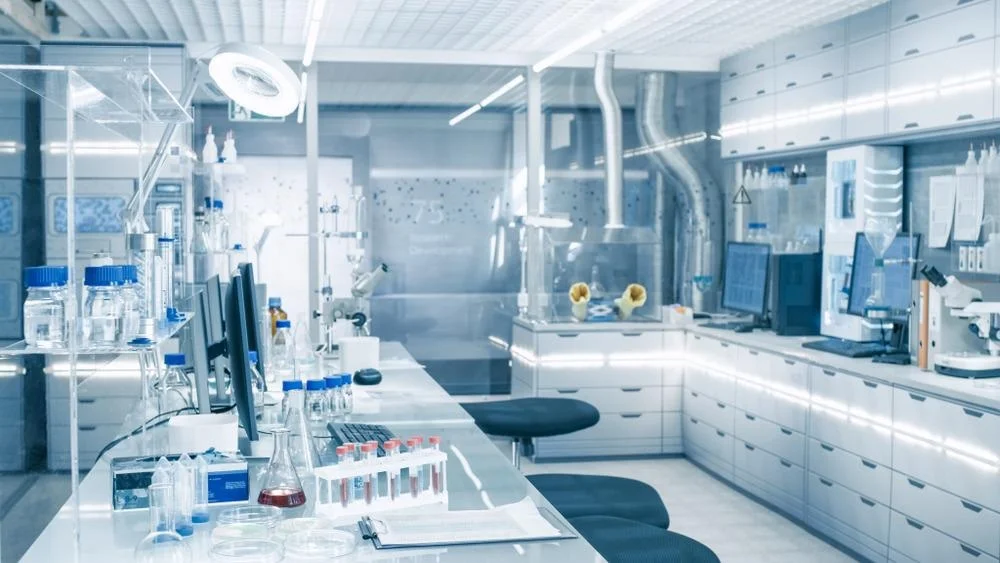Stormwater Organic Contaminant Testing
The testing of stormwater organic contaminants is a critical step in environmental monitoring and compliance. As the world becomes increasingly aware of water quality issues, the demand for reliable and accurate organic contaminant detection methods has grown significantly. This service ensures that stormwater runoff does not introduce harmful substances into our ecosystems, thereby protecting public health and the environment.
Organic contaminants can originate from various sources such as industrial activities, agricultural practices, urban runoff, and even natural processes. These compounds may include volatile organic compounds (VOCs), polycyclic aromatic hydrocarbons (PAHs), pesticides, solvents, and more. The presence of these pollutants in stormwater can lead to contamination of surface water bodies, affecting aquatic life and human health.
The process begins with the collection of representative samples from various points along a drainage system or at specific locations within a catchment area. Proper sample handling is crucial to prevent degradation of organic compounds before analysis. Once collected, these samples are transported to our laboratory for comprehensive testing using advanced analytical techniques such as gas chromatography-mass spectrometry (GC-MS) and liquid chromatography-tandem mass spectrometry (LC-MS/MS).
Our experienced team of chemists utilizes internationally recognized standards like ISO 17025:2017 to ensure the accuracy and precision of our results. This includes methods such as EPA Method 8260B for extraction, which employs a combination of Soxhlet extraction followed by solid-phase extraction (SPE). The extracted organic phases are then analyzed using high-performance liquid chromatography coupled with mass spectrometry (HPLC-MS/MS) to identify and quantify the target analytes.
The results from our testing provide valuable insights into the types and concentrations of organic contaminants present in stormwater. This information is essential for stakeholders involved in environmental management, water treatment processes, and regulatory compliance. By identifying problem areas early on, corrective actions can be taken to mitigate risks associated with contaminated runoff.
| Contaminant | Method of Detection | Sampling Frequency | Acceptable Limits |
|---|---|---|---|
| Volatile Organic Compounds (VOCs) | EPA Method 8260B | Monthly or as needed | Concentrations below EPA guidelines for drinking water |
| Pesticides and Herbicides | LC-MS/MS | Quarterly | Levels below the chronic daily intake (CDI) limits set by WHO |
| Solvents | GAS-MS | Bimonthly | Concentrations below EPA thresholds for industrial discharge |
| Polyaromatic Hydrocarbons (PAHs) | HPLC-MS/MS | Annually | Levels compliant with NPDWR standards |
The data generated from our tests not only helps in meeting regulatory requirements but also assists organizations in making informed decisions regarding their environmental policies and practices. Our goal is to provide accurate, reproducible results that can be relied upon for both compliance purposes and scientific research.
To summarize, stormwater organic contaminant testing plays a vital role in safeguarding our watersheds from harmful pollutants. By leveraging cutting-edge technology and adhering strictly to recognized standards, we offer a robust solution to ensure the integrity of our natural resources.
Scope and Methodology
- Sampling: Collection of stormwater samples from various points along drainage systems or specific catchment areas.
- Extraction: Use of Soxhlet extraction followed by solid-phase extraction (SPE) for the extraction of organic phases.
- Detection: Analysis using gas chromatography-mass spectrometry (GC-MS), liquid chromatography-tandem mass spectrometry (LC-MS/MS).
- Validation: Ensuring compliance with international standards such as ISO 17025:2017.
The scope of our testing extends beyond just identifying the presence of organic contaminants; it also involves quantifying their levels and assessing potential risks. Our methodology adheres strictly to regulatory guidelines, ensuring that all tests are conducted in a manner consistent with best practices.
By following this comprehensive approach, we can provide clients with detailed reports that outline not only what was found but also how significant the findings might be for downstream water bodies or aquatic ecosystems. This information is invaluable for decision-makers who need to prioritize remediation efforts or implement preventive measures against future contamination events.
Industry Applications
The application of stormwater organic contaminant testing spans multiple industries, including construction, agriculture, manufacturing, and urban planning. For construction projects, monitoring stormwater runoff helps minimize the impact on nearby water bodies by identifying and addressing any sources of pollution early in the process.
In agricultural settings, this type of testing can help farmers understand how their practices contribute to environmental degradation or preservation. They can then adjust their methods accordingly to reduce negative impacts while still maintaining productivity levels.
Manufacturing plants also benefit from our services by ensuring that their operations comply with local and national regulations related to water quality. By conducting regular tests, they demonstrate a commitment to sustainability and responsible stewardship of natural resources.
Urban planners can use the results of these tests to design more effective stormwater management systems that minimize contamination risks while maximizing efficiency in terms of resource utilization. Overall, this service contributes significantly towards creating healthier environments both locally and globally.
Quality and Reliability Assurance
- Use of certified reference materials (CRMs) to calibrate instruments regularly.
- Inclusion of internal quality control samples in every batch processed.
- Participation in proficiency testing programs recognized globally to validate analytical methods.
- Continuous training and certification of personnel handling equipment and performing analyses.
The reliability of our laboratory is guaranteed by implementing stringent quality assurance protocols throughout the entire testing process. From sample preparation to final reporting, each step follows established procedures designed to maintain consistency and accuracy.
We employ certified reference materials (CRMs) to ensure that all instruments are properly calibrated before use. Additionally, we include internal quality control samples in every batch processed, allowing us to monitor performance over time and make adjustments as necessary. Participation in proficiency testing programs recognized internationally provides further assurance that our methods meet the highest standards.
Our staff undergo continuous training and certification to stay up-to-date with advancements in technology and methodologies. This commitment ensures that we deliver reliable results consistently across all projects undertaken by our organization.





